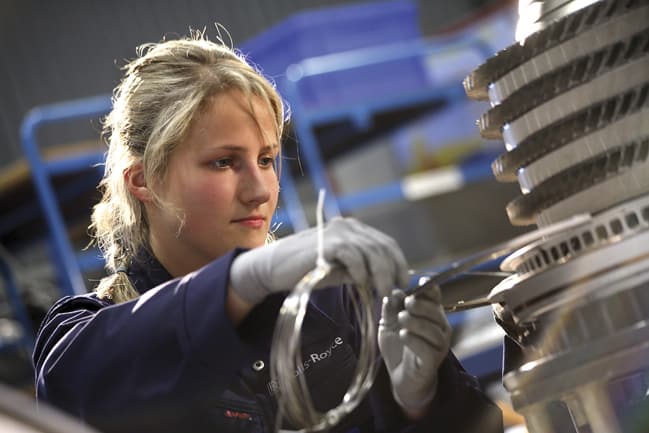The under-representation of women in engineering was brought into sharp focus on National Women in Engineering Day. There’s no doubt we need a more representative and diverse workforce, not only to address skills shortages but to improve the range of perspectives from which we draw inspiration. We need to actively promote the industry to that diverse audience and make a point of providing opportunities and inspiration to young people from all ethnicities and socio-economic backgrounds.

I chair a subgroup of the Royal Academy of Engineering’s Diversity Leadership Group, which has identified work experience as one way in which employers can reach young people from different backgrounds. By broadening the reach of work experience programmes, we can ensure it reaches beyond friends, family and young people already considering a future in the industry. Broaden the reach and you broaden the talent pool. Drawing on contributions from a number of employers and organisations, that sub-group has produced an employer’s guide to support engineering employers (particularly small and medium-sized enterprises) in improving the reach of their work experience offer.
”Could your business adopt the National Grid policy of allocating a percentage of work experience places to young people at risk of finding themselves not in employment, education or training?
We need more girls to consider a career in engineering. Many employers have a policy of an equal gender balance for work experience intake, and this is what all employers should be aiming for.
We must also ensure more black, Asian and minority ethnic and more disabled students, as well as those from lower socio-economic backgrounds, are actively encouraged to participate. Could your business adopt the National Grid policy of allocating a percentage of work experience places to young people at risk of finding themselves not in employment, education or training?
National data will give you basic information about schools in your area. Through the Tomorrow’s Engineers network, employers also have access to a searchable schools database that captures employer-led engineering careers activity. This continually expanding heat map helps target schools more efficiently. Having identified the school, teachers can find students that meet your chosen criteria. Advertising is also likely to bring in students you might not normally reach.
There is no one-size-fits-all model, but what is clear is that establishing a work experience policy that outlines the application process, roles and responsibilities and who it is available to creates a solid foundation on which to build an inclusive and successful programme. Take the ‘quality, not quantity’ approach to offer a first-rate experience.
For Angela Malynn, a fortnight of work experience was a very positive experience. In fact, she is now a mechanical engineer at Arup – living proof of the impact of relevant, engaging work experience.
We want young people to be better informed about routes into engineering and know more about what is involved in engineering jobs. We want them to see how rewarding an engineering career could be.
Offering an inclusive work experience programme can’t be a box-ticking exercise; it needs to offer an insight into careers in engineering to young people regardless of background, ethnicity or gender. By all means reserve a number of places for friends and family, but then cast the net wider to reap greater rewards. This won’t just happen; you’ll need a policy of active inclusion that attracts students from diverse social and demographic backgrounds. Start by reading the Engineering work experience guide.










Water Sector Talent Exodus Could Cripple The Sector
Well let´s do a little experiment. My last (10.4.25) half-yearly water/waste water bill from Severn Trent was £98.29. How much does not-for-profit Dŵr...